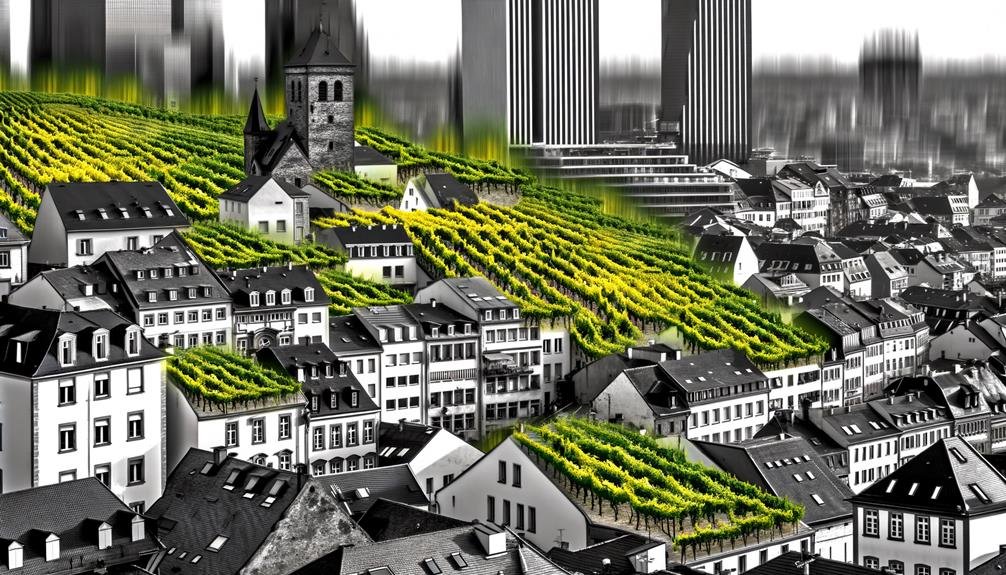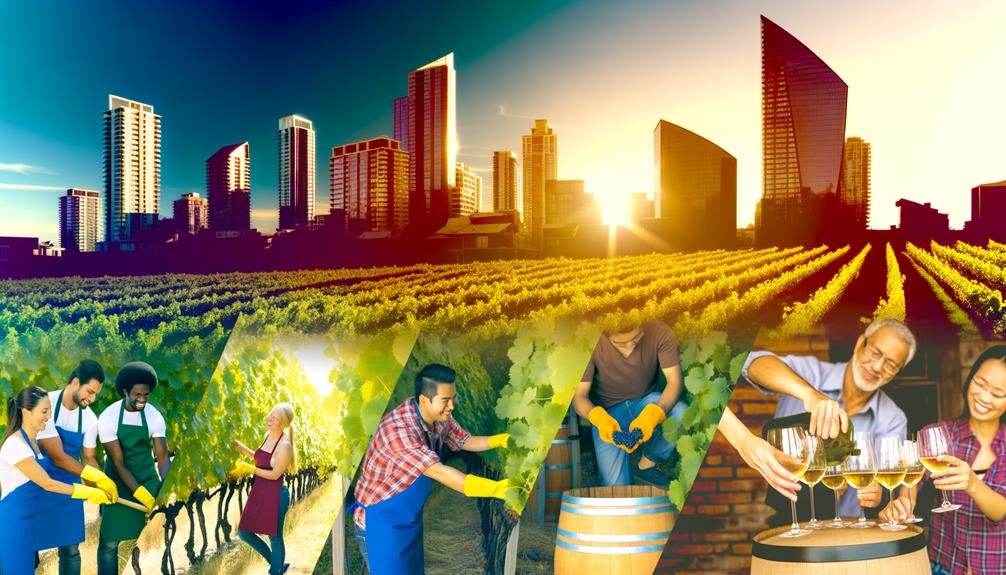Urban vineyards are reshaping the traditional winemaking scene by flourishing in the midst of busy cities. Despite dealing with limited space and urban obstacles, innovative projects like Vienna's vast vineyards and San Francisco's pioneering Neighborhood Vineyard showcase remarkable adaptability and resilience. These urban vineyards not only produce exceptional wines but also contribute to the cultural and social fabric of their communities by incorporating sustainable practices and engaging with local residents.
The success of these urban oases lies in their ability to navigate the complexities of city life while maintaining a focus on viticulture. By striking a balance between nature and urbanity, they create a unique synergy that sets them apart from traditional vineyards. For example, Vienna's vineyards offer a serene escape from the hustle and bustle of the city, allowing visitors to immerse themselves in nature without leaving the urban landscape.
Similarly, San Francisco's Neighborhood Vineyard provides a space for community gatherings and events, fostering a sense of belonging and connection among residents.
Overall, urban vineyards demonstrate how blending nature with city living can result in a harmonious and thriving environment. Their ability to adapt to challenges and embrace sustainability not only benefits the local wine industry but also enhances the quality of life in urban areas. By reimagining traditional winemaking practices in an urban setting, these vineyards pave the way for a more sustainable and interconnected future.
History of Urban Vineyards

The history of urban vineyards is a fascinating tale of how vineyards have found their place among the busy streets and towering buildings of modern cities.
The concept of urban vineyards dates back centuries, with cities like Vienna establishing vineyards around 500 BC, showcasing a long-standing tradition.
These urban vineyards have succeeded by seamlessly blending into city landscapes, taking inspiration from models like Paris' Clos Monmartre, which was founded in 1933.
In more recent times, modern urban vineyards such as San Francisco's Neighborhood Vineyard, established in 2013, demonstrate innovation by effectively utilizing small spaces to produce high-quality wines.
This integration is fueled by community engagement and a shared goal of preserving green spaces amidst urban development.
The ongoing success of urban vineyards underscores their potential in promoting sustainable, local wine production within metropolitan areas.
Notable Urban Vineyards
Urban vineyards like Neighborhood Vineyard in San Francisco, Vienna's extensive wine estates, and Paris' historic Clos Monmartre showcase the successful integration of vine cultivation in vibrant city settings.
Established in 2013, Neighborhood Vineyard spans 0.5 acres and specializes in producing Pinot Noir, drawing inspiration from the renowned Clos Monmartre in Paris.
Vienna's vineyards, which have roots dating back to 500 BC, cover an impressive 1,500 acres and offer a wide range of grape varieties such as Gemischter Satz and Gruner Veltliner. With over 600 wineries ensuring top quality, Vienna's wine scene is thriving.
Clos Monmartre, founded in 1933 to preserve green spaces in Paris, grows Gamay and Pinot Noir on its compact 0.37-acre plot and annually celebrates its heritage through the lively Fête des Vendanges festival.
These urban vineyards serve as prime examples of how city spaces can effectively nurture and support flourishing viticulture.
Community and Wine Production

Community involvement is essential for the success and sustainability of urban wine production. When local residents participate as volunteers during planting and harvest seasons, they develop a sense of ownership and connection to the vineyard.
Educational programs, such as workshops and tours, play a vital role in educating the community about viticulture and winemaking processes, leading to a greater appreciation for the craft.
Cultural events like festivals and wine tastings not only provide social and economic benefits but also help urban vineyards gain visibility within the city.
Collaborations with local businesses and institutions can spark innovation and promote sustainable growth for urban vineyards. By incorporating these elements, urban vineyards can not only survive but thrive in bustling cities.
Conclusion
Urban vineyards, thriving in cities, defy traditional winemaking conventions with their resilience and creativity. Vienna's 1,500-acre vineyards and San Francisco's Neighborhood Vineyard are prime examples of this trend. These vineyards not only produce top-notch wines but also actively engage with their communities and prioritize sustainable practices. They serve as green havens in bustling urban landscapes, showcasing the adaptability and enduring spirit of viticulture.
The presence of urban vineyards is a testament to the innovative potential of winemaking in unexpected locations. By flourishing in city settings, they challenge the notion that vineyards must be situated in rural areas. These vineyards not only add a touch of nature to concrete jungles but also contribute to the local culture and economy. Their success highlights the possibilities of integrating agriculture into urban spaces, paving the way for a more sustainable and diverse approach to winemaking.
